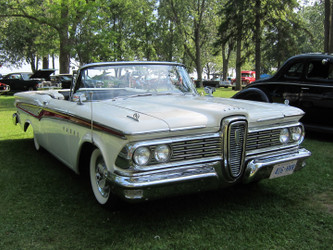Classic Car History: The Edsel
Posted by Jil McIntosh on Sep 11th 2020
Sometimes an automaker has the best of intentions, and everything still goes sour. And that’s the Edsel, which wasn’t so much a bad car, as a victim of timing.
It was supposed to jump-start an entirely new division for Ford. Instead, it survived only three model years, and while the exact number was never revealed, it’s believed to have cost Ford some $350 million – $3 billion in today’s economy.
GM and Chrysler each had five divisions, to reach a range of buyer budgets. Ford had three and wanted to catch up through Edsel.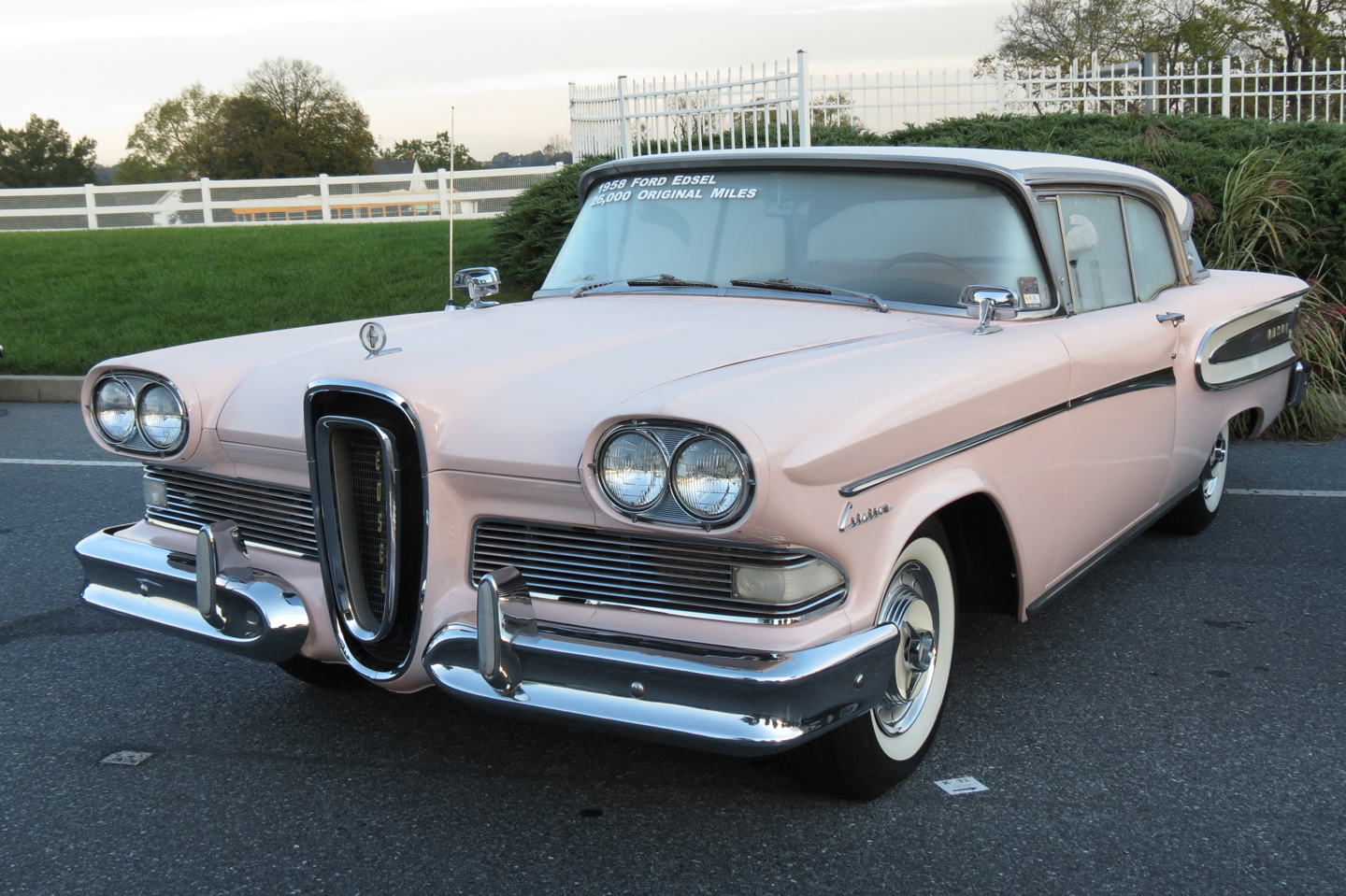
It was styled by a team under designer Roy Brown. Most cars had a horizontal grille, and Brown wanted a vertical one to stand out. It certainly did: detractors dubbed it everything from a “horse collar” to “an Oldsmobile sucking on a lemon.” Brown also didn’t want upright fins, which almost every other car carried. While it might have just been a coincidence, other automakers started toning down their fins soon after the Edsel debuted.
It was called the “E-Car” during development, but that stood for “Experimental.” Some 18,000 names were compiled for consideration, but Ernest Breech, Ford’s chairman of the board, didn’t like any of them. Instead, he came up with Edsel. It was for Henry Ford’s only child, Edsel Ford, a well-liked man who had been the company’s president, and who had died in 1943, four years before his father’s death. The Ford family reportedly wasn’t keen on the idea but went along with it.
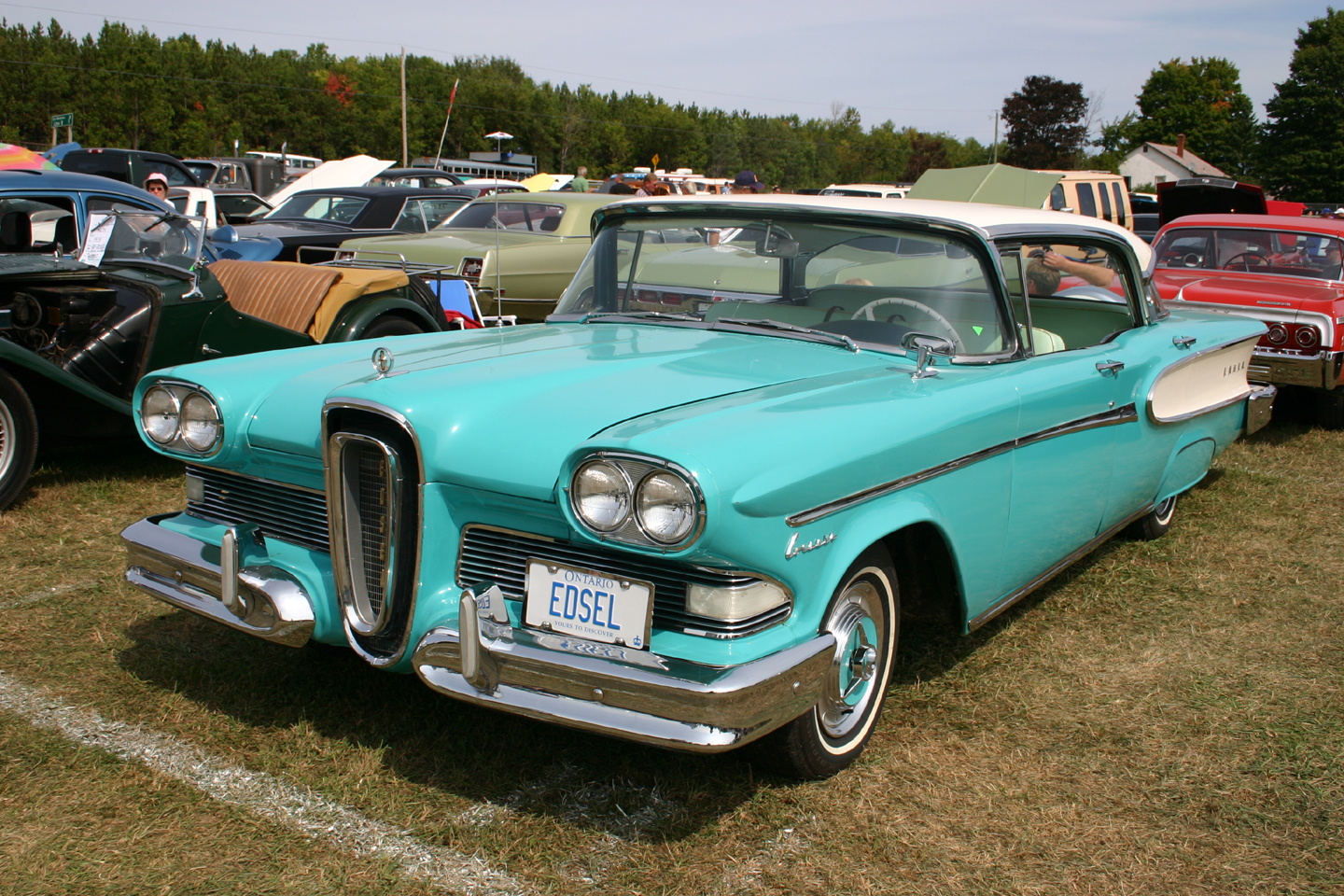
The Edsel debuted for 1958 as the lower-priced Ranger and Pacer, on a Ford-based chassis with a 118-inch wheelbase, starting at $2,484; and as the pricier Corsair and Citation, on a chassis derived from Mercury and with a 124-inch wheelbase, starting at $3,311. The Ranger and Pacer used a 361-cubic-inch V8, making 303 horsepower; the Corsair and Citation had a 410-cubic-inch V8 making 345 horses. On higher-end models, the three-speed automatic transmission shifted with buttons in the steering wheel, a problem-prone and short-lived system called Teletouch.
Initially, the Edsel suffered quality issues, and most could be traced back to production. They were built in six factories on Ford or Mercury assembly lines, depending on the model, but were added on top of the production schedule. The line went faster, so workers had less time to build each car, and had to switch to different parts and production whenever an Edsel came down the pipeline.
The car was officially unveiled during a television special starring Bing Crosby, Rosemary Clooney, Louis Armstrong, and Frank Sinatra, all of whom received new cars. Clooney’s car had problems – either during or after the show, depending on whose version you hear – and had it swapped for another.
The Edsel pulled down a record 4,000 pre-production orders on its first day. But a month after production started in August 1957, the American economy fell into a deep recession. Auto sales overall dropped by 31.4 percent in 1958. Ford dealers were already discounting their stock and many buyers went for those, rather than the pricier Edsel. Even so, some 63,110 buyers went for it, which set another record for a first-year, medium-priced car.
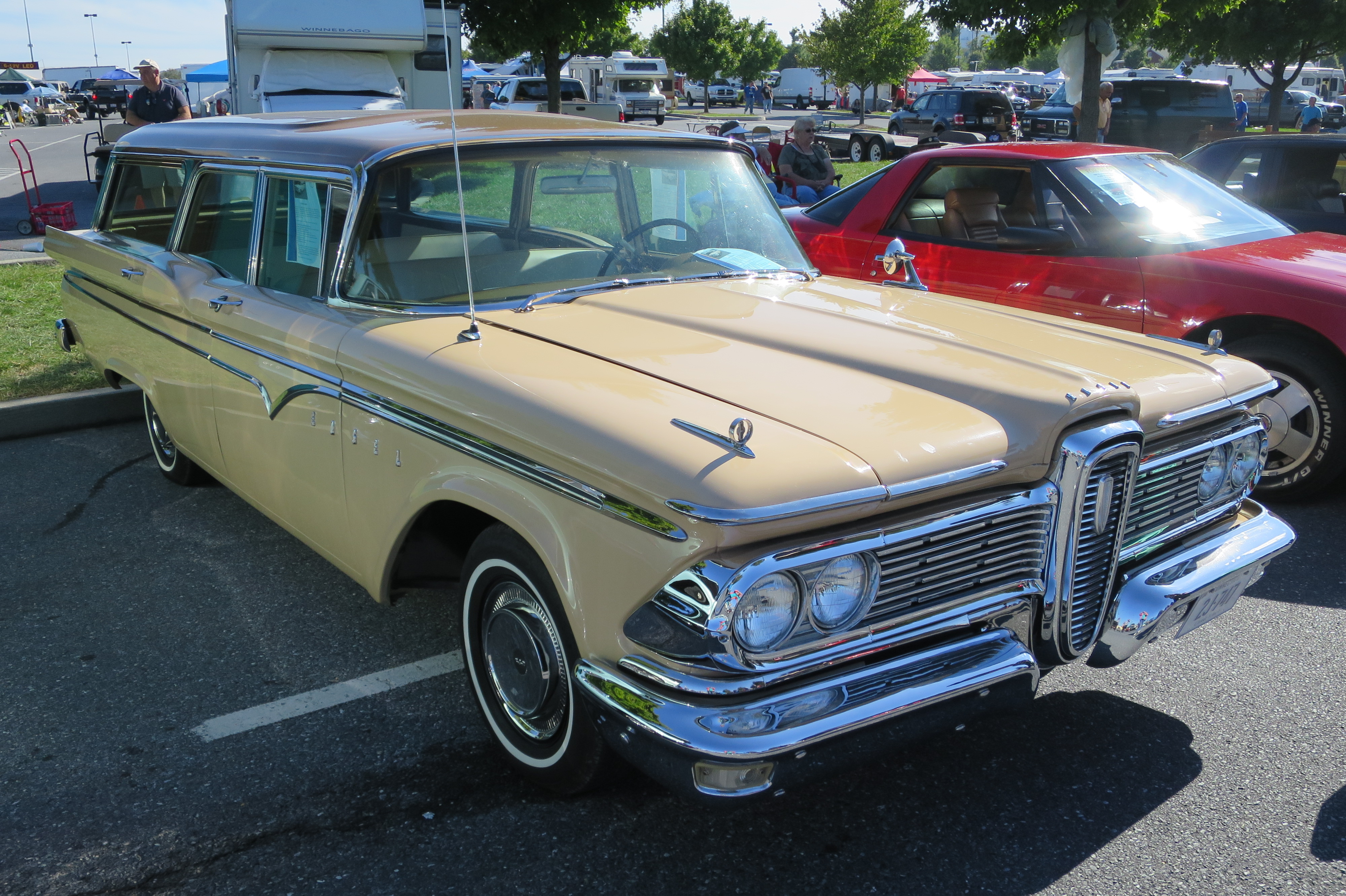
But it didn’t last. For 1959, the lineup was pared down to the Ranger, Corsair, and Villager station wagon. Drivers were tired of big, thirsty engines, and the Edsel got smaller engines that year, including an available inline-six in the Ranger. Prices ranged from $2,629 to $3,072. Sales fell to 44,891 vehicles, all built-in Ford’s factory in Louisville, Kentucky.For 1960, the cost-cutting went even deeper. Edsel offered only the Ranger and Villager wagon, based on the all-new styling from Ford’s full-size models, and with a split grille that made it look like a Pontiac. Only 2,846 cars were built, all of them during calendar-year 1959. On November 19 of that year, Ford announced the Edsel was canceled – exactly three years to the day it was introduced.
The company planned to sell 200,000 copies each year. The final tally was 110,847 over three years. It might have been the name, or the design, or the quality – or just a brand-new car released at the worst possible time, and destined to go down in history not for what it was, but for what it wasn’t.
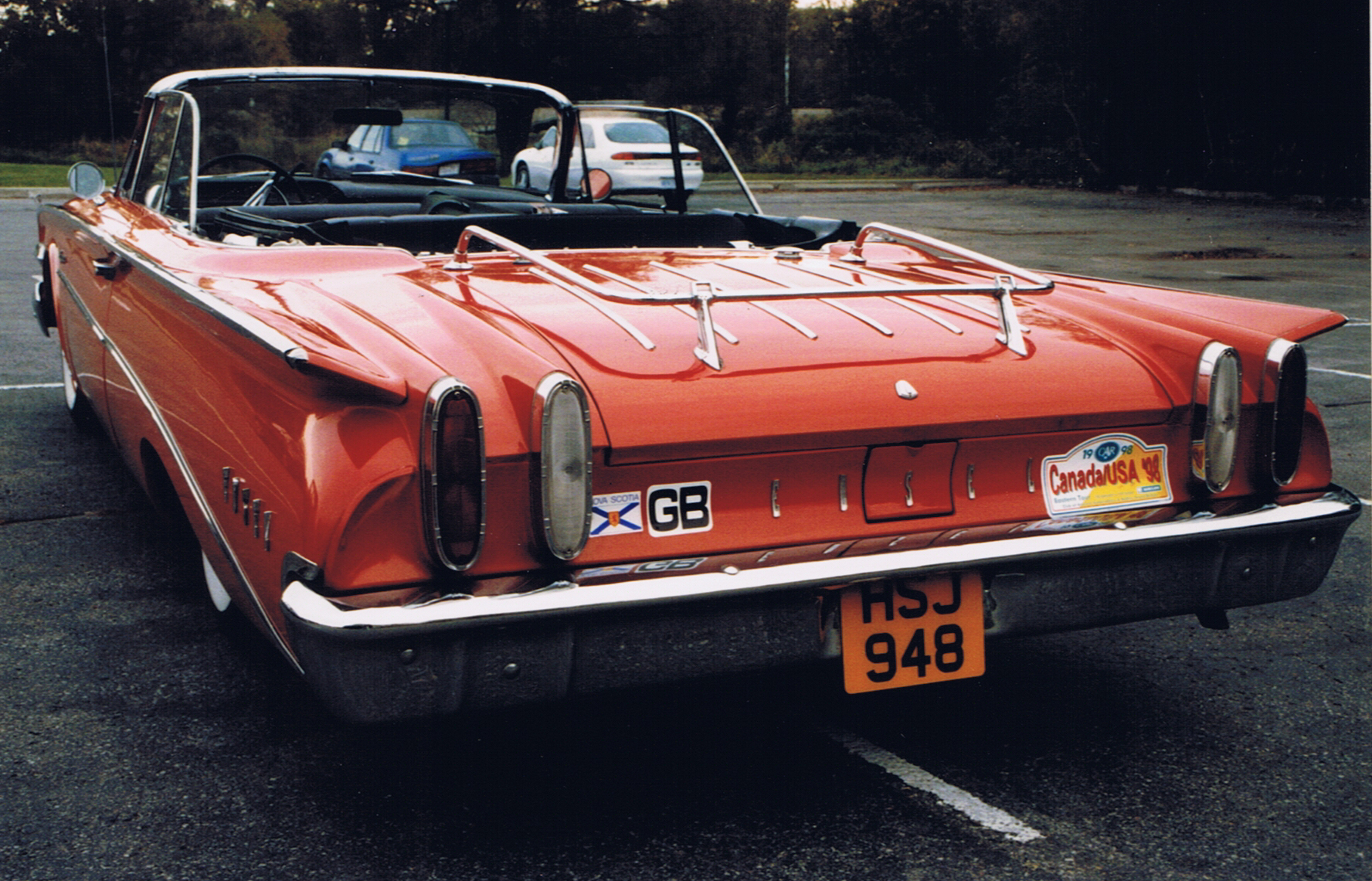
Here are some other interesting tidbits about the Edsel…
- Designer Roy Brown originally worked for GM. After leaving there and before joining Ford, he designed refrigerators, Chris-Craft boats, and the first Bell five-passenger helicopter. After the Edsel, he headed up Ford of England’s design team and created the Cortina.
- The quickest way to tell a ’58 from a ’59 Edsel is the grille. In 1958, the “horse collar” floats in its housing; for 1959, the collar is filled in with horizontal bars.
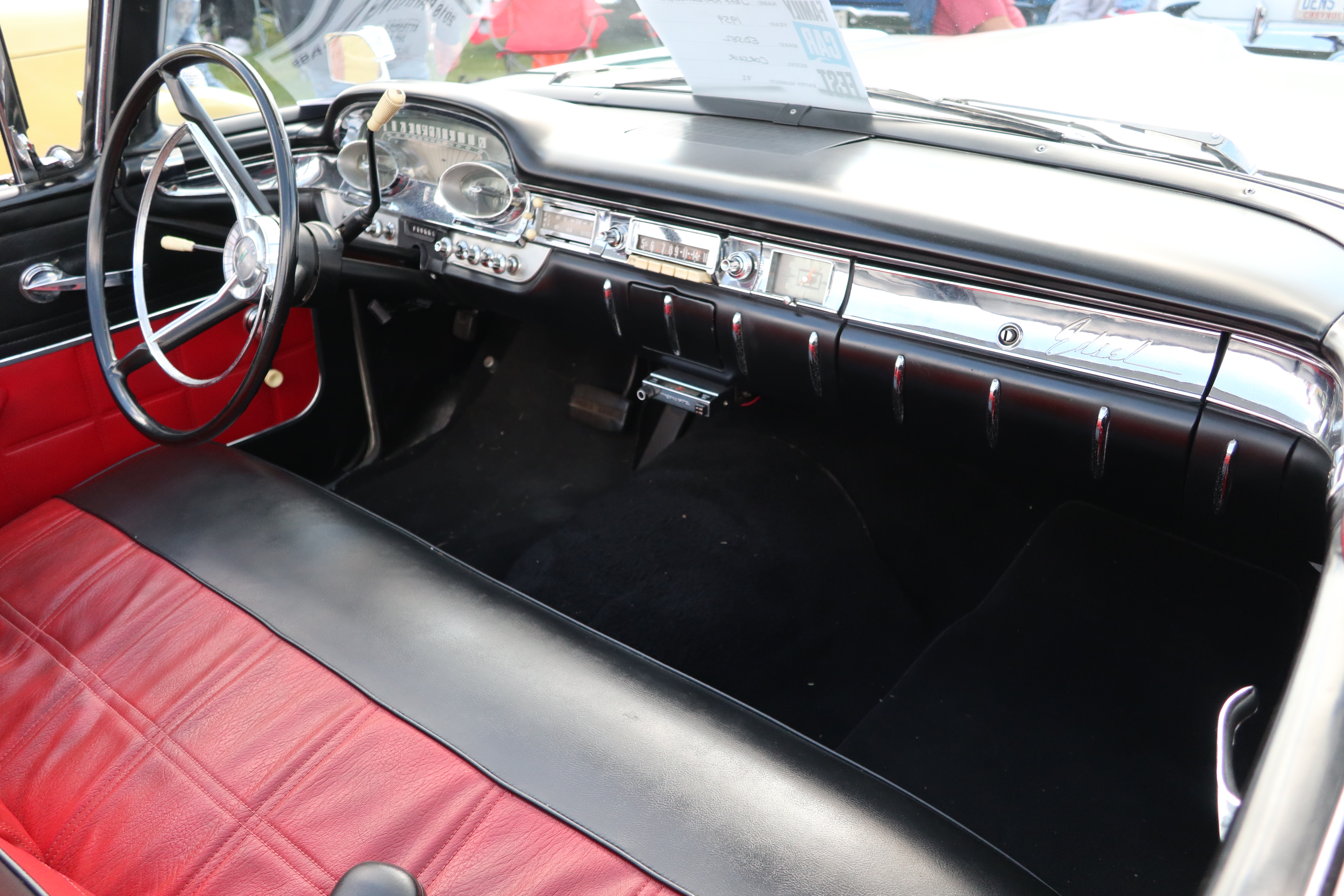
- Edsel options included power seats, air conditioning, a station-seeking radio, and on the Corsair and Citation, a pushbutton-operated chassis lubrication system.
- The smaller, cheaper Edsel models were intended to compete with Pontiac and Dodge, while the larger, pricier Edsels were meant for Buick and Chrysler.
They might not have been that big of a deal when new, but Edsels are very popular with collectors today. Convertibles are the most desirable, but station wagons have been steadily gaining in popularity. Sometimes you’ll see a Ranchero-styled Edsel pickup, but they’re custom-built; the factory never made them. Parts are still easy to find, making these “fabulous flops” a relatively easy model to restore.
Are you restoring an Edsel and having trouble finding classic Edsel parts? If you are, finding Edsel parts is easy. Collectors Auto Supply has thousands of car restoration parts and automotive restoration supplies. Check out our home page to begin your search.


